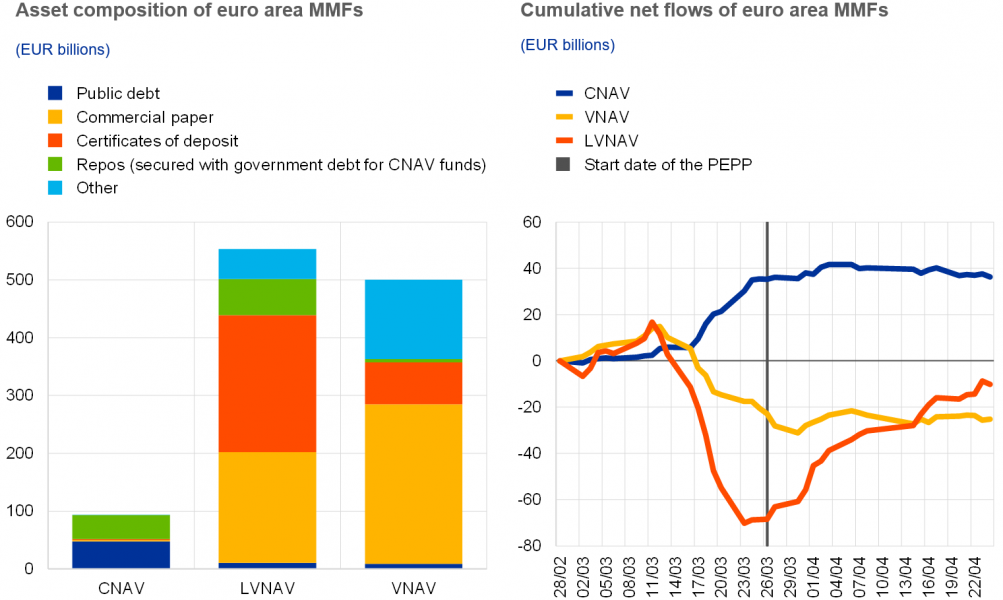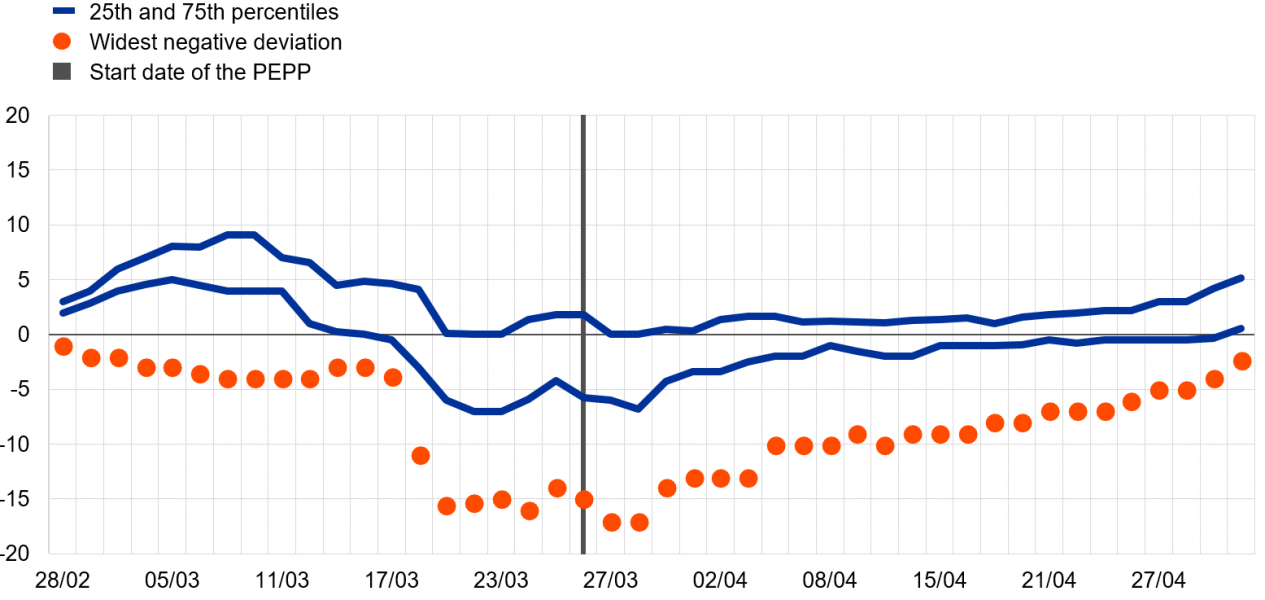References
Capotă, Laura-Dona, M. Grill, L. Molestina Vivar, N. Schmitz and C. Weistroffer (2021). How effective is the EU Money Market Fund Regulation? Lessons from the Covid-19 turmoil. ECB Macroprudential Bulletin No. 12.
Capotă, Laura-Dona, M. Grill, L. Molestina Vivar, N. Schmitz and C. Weistroffer (2022). Is the EU Money Market Fund Regulation fit for purpose? Lessons from the COVID-19 turmoil. ECB Working Paper No. 2737.
European Central Bank (2021). Eurosystem contribution to the European Securities and Markets Authority (ESMA) consultation on the framework for EU money market funds.
European Systemic Risk Board (2020). Issues note on liquidity in the corporate bond and commercial paper markets, the procyclical impact of downgrades and implications for asset managers and insurers. May.
European Systemic Risk Board (2021). Recommendation of the European Systemic Risk Board of 2 December 2021 on reform of money market funds. ESRB/2021/9.
Financial Stability Board (2020). Holistic Review of the March Market Turmoil. Report to the G20, 17 November.
Grill, M., Molestina Vivar, L., Mücke, C., O’Donnell, C., O’Sullivan, S., Wedow, M., Weis, M. and Weistroffer, C., (2022a), “Mind the liquidity gap: a discussion of money market fund reform proposals”, Macroprudential Bulletin, Issue 16, ECB, January.
Grill, M., Molestina Vivar, L., Mücke, C., O’Donnell, C., Weis, M., and Weistroffer, C. (2022b). Assessing the impact of a mandatory public debt quota for private debt money market funds. Macroprudential Bulletin, Issue 16, ECB.
International Organization of Securities Commissions (2012). Policy Recommendations for Money Market Funds. Media Release 9 October.









